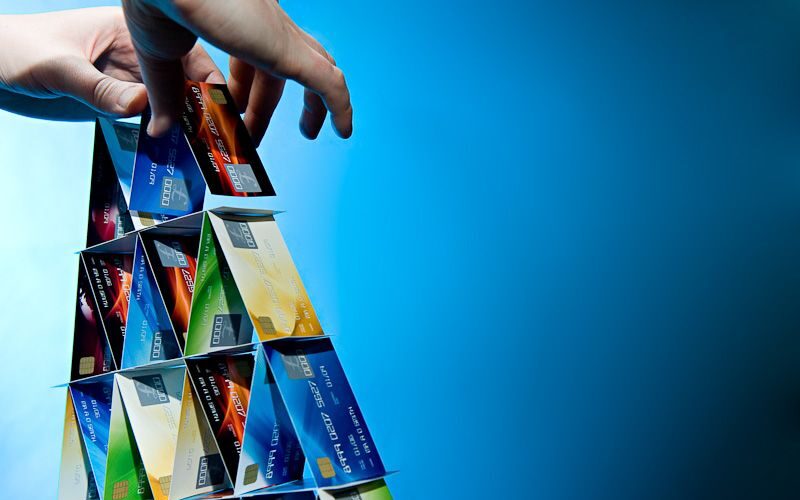✌️ Welcome to the latest issue of The Informationist, the newsletter that makes you smarter in just a few minutes each week.
🙌 The Informationist takes one current event or complicated concept and simplifies it for you in bullet points and easy to understand text.
🧠 Sound smart? Feed your brain with weekly issues sent directly to your inbox here
Today’s Bullets:
- Fractional Reserve Banking History
- Modern Fractional Reserve Banking
- Pros of Fractional Reserve Banking
- Is Fractional Reserve Banking Doomed?
Inspirational Tweet:
This clip perfectly sums-up the DRASTIC shift in banking that's upon us. The path to this new system is going to be intense, but rest assure, the ways of fractional reserve banking are coming to an end – whether traditional financiers like it or not. @CaitlinLong_ gets it! https://t.co/sEck1vgiQG
— Preston Pysh (@PrestonPysh) November 18, 2022
As Preston Pysh points out here, cracks are beginning to show in our current leveraged banking system known as fractional reserve banking. So much so, that a new system is desperately needed to eliminate the problems of old.
But what exactly is fractional reserve banking, how did it come about, and is it really dying?
Let’s explore this nice and easy today, shall we?
🤠 Fractional Reserve Banking History
To understand modern fractional reserve banking, we first have to take a peek at its origins.
Fractional reserve banking can actually be traced all the way back to the early 17th century, where people deposited their gold and silver coins with goldsmiths and received promissory notes in return. These notes eventually became accepted as a means of exchange between people. This led the goldsmiths to realize that people were using the paper in lieu of the coins and rarely withdrew funds simultaneously. And so, the goldsmiths began making loans against coins for profit.
Fractional reserve banking is born.
Then, due to incidents of runs on banks and insolvencies, Sweden was the first country to form a central reserve bank in 1668. Other countries soon followed, giving these central banks the power to regulate commercial banks, set reserve requirements, and eventually stand in as the emergency lender in the case of a bank run.
The whole manipulation of money through monetary policy function of central banks comes later, and we won’t get into that today, but we will get into how fractional reserve banking has evolved into modern day.
🤑 Modern Fractional Reserve Banking
In essence, fractional reserve banking is a system that requires banks to hold only a portion of the money loaned out by them as reserves. This is meant to ensure liquidity and prevent insolvency.
The image that may come to mind, of course, is a person depositing a $100 bill at the bank, the bank then putting that bill in its vault and proceeding to lend money to other customers against it.
And this is partially true.
However in the modern world, what really happens is a commercial bank decides to make a loan first, and then it seeks out the reserves later.
Wait. What?
It just creates loans out of thin air?
See, when a bank makes a loan, it creates two corresponding book entries on its balance sheet: one on the assets side and one on the liabilities side. It counts the loan as an asset on its balance sheet and simultaneously offsets this with a newly created deposit, which is a liability of the bank to the depositor (the one taking out the loan).
So, unlike the gold coins and promissory notes of old, modern day loans actually create deposits.
But now the bank needs reserves to remain in regulation and have sufficient liquidity on hand. So, the bank seeks out deposits either by borrowing from new customers or by borrowing from other banks.
Exactly. The overnight window that we have talked about before, where banks can borrow from each other at a rate that’s about the same as the Fed Funds rate.
The minimum amount banks need to keep in reserves is set by the Fed, and this is called the reserve requirement.
Prior to the Fed pandemic relief rule changes, the reserve requirement for banks in the US with more than $100.2M of deposits was 10%.
Example:
Customer takes out a personal loan for $10K at Bank of America (BofA) → BofA simultaneously creates a loan asset and deposit liability on its balance sheet, both for $10K → Customer withdraws $10K → BofA borrows $1K from JP Morgan in the overnight window
BofA’s reserve ratio is now 10% ($1K / $10K)
By keeping the reserve ratio at 10%, Bank of America is compliant with the Fed.
*NOTE: Since March 2020 and the pandemic, the Fed has lowered and kept the reserve requirement at zero.
I know what you’re thinking, great now they can lend to infinity, but that’s not really true either. Banks are still required to maintain capital requirements in the form of liquid assets and the Fed mandated Supplemental Leverage Ratio.
But there are not currently ratio limits on loan reserves themselves, it’s more of a total business risk assessment for the bank instead.
Still, commercial banks are essentially playing an ongoing game of chicken, betting that for each loan it creates, it can create a certain number of deposits against it. If it loses the ability to borrow from other banks because of credit issues or potential insolvency, then the remaining customers may demand their deposits back all at once in fear of losing them.
This phenomenon is known as a run on the bank, and it can be devastating.
If you’ve ever seen the movie A Wonderful Life, this is exactly what happens to George Bailey’s Bailey Building and Loan. All it took was a rumor to spread that the bank was insolvent, and a run was created, rendering the bank insolvent for real.
So, why do we even use this flawed system, are there any positives?
👍 Pros of Fractional Reserve Banking
The obvious pro to fractional reserve banking is it gives banks the ability to use customer funds that would otherwise just sit idle in their vaults or on their books. The banks can then generate interest, be profitable, and offer more loans to those who need money or wish to borrow for a business. And as we’ve seen with the modern system, banks can create loans that are in turn stimulating to the economy, especially in a low-rate environment.
I mean, there’s no question that availability of debt enables us to borrow from future earnings to be productive today, accelerating technological advancements and efficiencies.
Of course, as we have seen in recent years, the sheer amount of debt created can get out of hand.
Back to the main con of fractional reserve banking: over-leverage of banks and exposure to bank runs or massive insolvencies.
The Great Depression. The Great Financial Crisis.
Will the next one take it all down?
☠️ Is Fractional Reserve Banking Doomed?
With repeated financial crises and the seemingly continuous need for central bank intervention, does this spell out the end for fractional reserve banking?
Not exactly.
Well, not in traditional banking, anyway. The system is not quite ready for that big of a change just yet.
But there is hope for a safer way to save your money. To eliminate your exposure to these fractional reserve lenders.
See, what Satoshi created in Bitcoin was an asset that eliminates the need for constantly chasing returns to keep up with inflation, being beholden to banks to custody your savings, rather than stuff them in a safe or under the bed.
Because while I agree that it will take a while, many years perhaps, there is a significant possibility that Bitcoin grows into the premier store of value asset in the world.
What does this mean?
It means you can work and save without worry of your savings being destroyed by some irresponsible, over-levered, egregious bank. Or runaway inflation.
Work. Save. Work. Save.
Self custody, without worry.
And if you watched the video embedded in the Tweet above, you heard Caitlin Long elegantly explain how you can easily borrow against your Bitcoin one-for-one in times of need for liquidity by using it for commodity credit. You can avoid handing it over to institutions who will use it for circulation credit, i.e., fractional reserve lending.
How:
Place Bitcoin in multi-sig third-party escrow (i.e., you have co-control over its use and movement) → Borrow money against it, one-for-one, not levered → Pay back the loan when you have sufficient liquidity → Reclaim your Bitcoin
That said.
With the latest debacle in FTX and Alameda, one thing I do believe is imminent is the elimination of fractional reserve type of behavior in these cryptocurrency exchanges. The days of creating tokens from thin air and borrowing and lending against them ad infinitum are numbered.
Regulation is coming.
And though the industry clearly has a long way to go before it grows up, and traditional banking will obviously fight this every step of the way, inevitable changes will only accelerate the growth of Bitcoin as a true store of value.
And that’s a day I’m personally very much looking forward to.
That’s it. I hope you feel a little bit smarter knowing about fractional reserve banking and how Bitcoin could help change it all.
Before leaving, feel free to respond to this newsletter with questions or future topics of interest. And if you want daily financial insights and commentary, you can always find me on Twitter!
✌️Talk soon,
James










